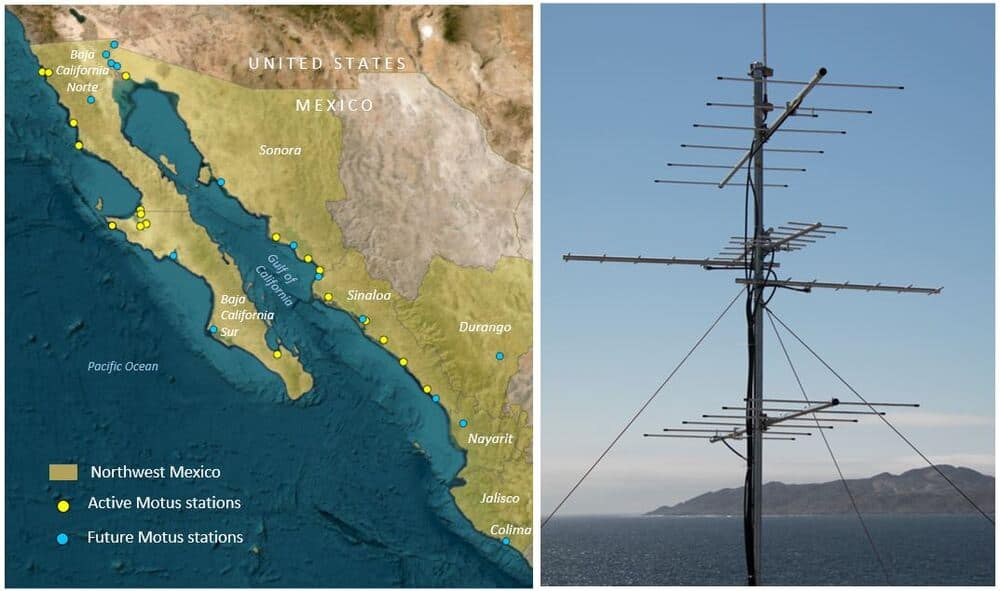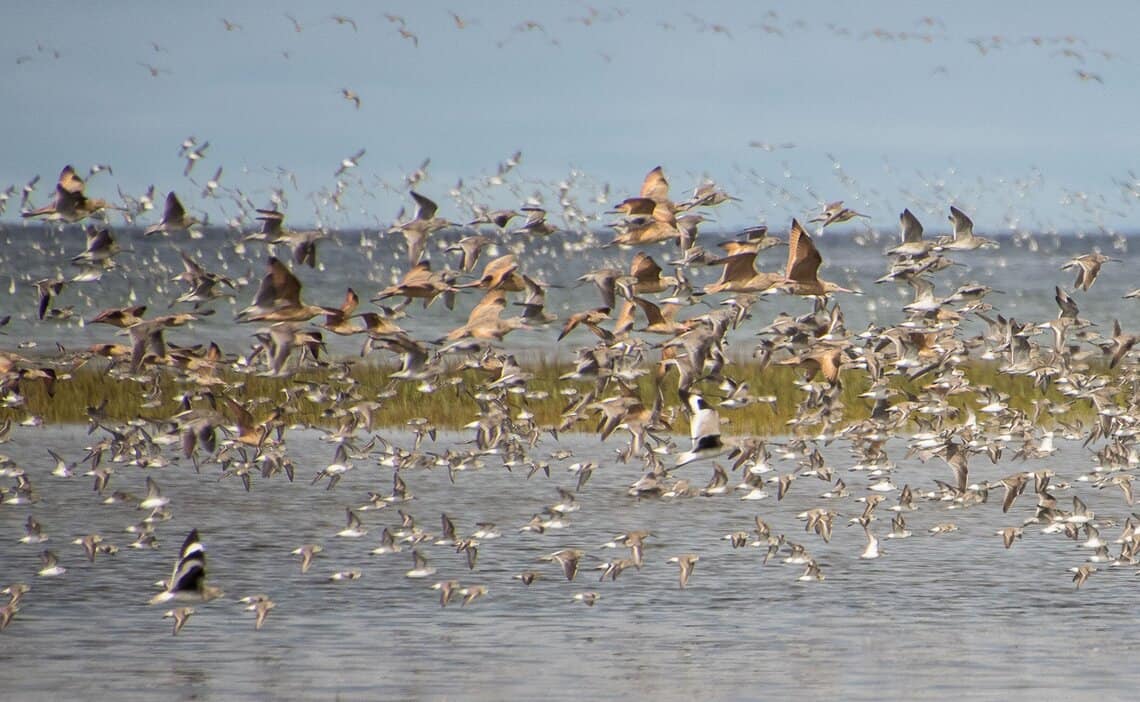A mixed flock of shorebirds in Guerrero Negro – Ojo de Liebre wetland complex (photo by Julian Garcia Walther).
By Julián García Walter, Pronatura Noroeste

Each year, millions of migratory birds travel through the Pacific Americas Flyway to the Northwest (NW) coast of Mexico as part of their annual cycle. The region is home to a handful of estuaries and coastal wetlands that provide some of the best habitat for both wintering and breeding birds. Despite the large numbers of birds that rely on this region, for many species it is still a mystery where they go, how individual birds use their habitat, and whether they can survive the multiple threats found along their migratory route. Tracking the whereabouts of migratory birds, however, is not an easy task. Birds are always on the move, often using remote and inaccessible areas. It is also very difficult to record the individual movements of birds as they can’t be differentiated one from the other.
To make this task easier, Pronatura Noroeste—together with a coalition of partners—is now leading the expansion of the Motus network in NW Mexico. Motus is an international, collaborative initiative where scientists and conservationists are installing stations that can automatically track the movement of birds. Each station is composed of several antennae that can detect passing birds marked with tiny radio-transmitters in a 10-20 km radius from the station (Fig.2, right). After a bird is detected by the antenna, a tiny computer records its signal and sends it to a central database where users can access the data. Currently, there are almost 1,000 active stations found mainly in the U.S and Canada but few in Latin America. Our overarching goal is to link the breeding and wintering grounds of migratory birds by expanding the Motus network to Mexico. With funding support from the Sonoran Joint Venture’s Awards Program, in 2020 we installed the first three stations in Guerrero Negro and Golfo de Santa Clara. Two years later, our coastal Motus network grew to 19 stations covering 15 of the most important priority coastal wetlands in NW Mexico and continues to grow (Fig.2, left).
Our new coastal Motus network has allowed us to track both our tagged birds and those tagged by other scientists along the western hemisphere. These initial detections have already showcased the journeys performed by Western Sandpipers, Swainson’s Thrushes, Black Terns (among many others), and exemplify their reliance on the coastal wetlands of NW Mexico as stepping-stones during their migratory routes.
Animation of the Migration of tagged Swainson’s thrush (red), western sandpiper (blue) and black terns (yellow) by multiple Motus collaborators in Canada and the United States from July to September 2022. Our coastal array now allows us to link the movement of tagged birds elsewhere in the continent (by Motus and Julián García Walter).
Simultaneously, we have also begun our own tagging program to fill knowledge gaps on several species of conservation concern. The generated data is being used to support on-going research and conservation projects that include clarifying the effects of sea level rise on shorebirds; assessing the effectiveness of using artificial habitat for birds; and understanding the migratory ecology of our focal species. For example, we have now recorded Least Terns that have demonstrated migratory connectivity between their breeding colonies in Ensenada and Guerrero Negro wetland. Likewise, our tagged Willet has showcased a full migratory cycle spanning central Canada during breeding season, the intermountain west of the U.S. during migration and several NW Mexican sites during the winter. Finally, the Motus network has allowed us to test innovative methods to study the habitat use of red knots by tracking the fine scale movements of individual spending the winter in Guerrero Negro.
Given the rising tide of interest on Motus by scientists, conservationists, and land-managers, we are confident that the Motus network will continue its growth in Mexico and beyond. We are always looking for new collaborators to help us strengthen the network in NW Mexico and use it to support research and conservation. Here are some ways in which you can learn, collaborate, or use the Motus network on your next project:
- Explore existing Motus stations and bird detections on the newly created Motus dashboard
- Plan a tracking project, tag birds and use existing Motus stations (more information on how to get started using Motus here)
- Help us expand the Motus network by installing new stations
- Join us in one of our station installations or future workshops (funding pending); In 2023 we plan to install stations in the Colorado River Delta, Sonora, and Sinaloa
For more information feel free to reach out to Julian Garcia Walther or Daniel Portillo.

